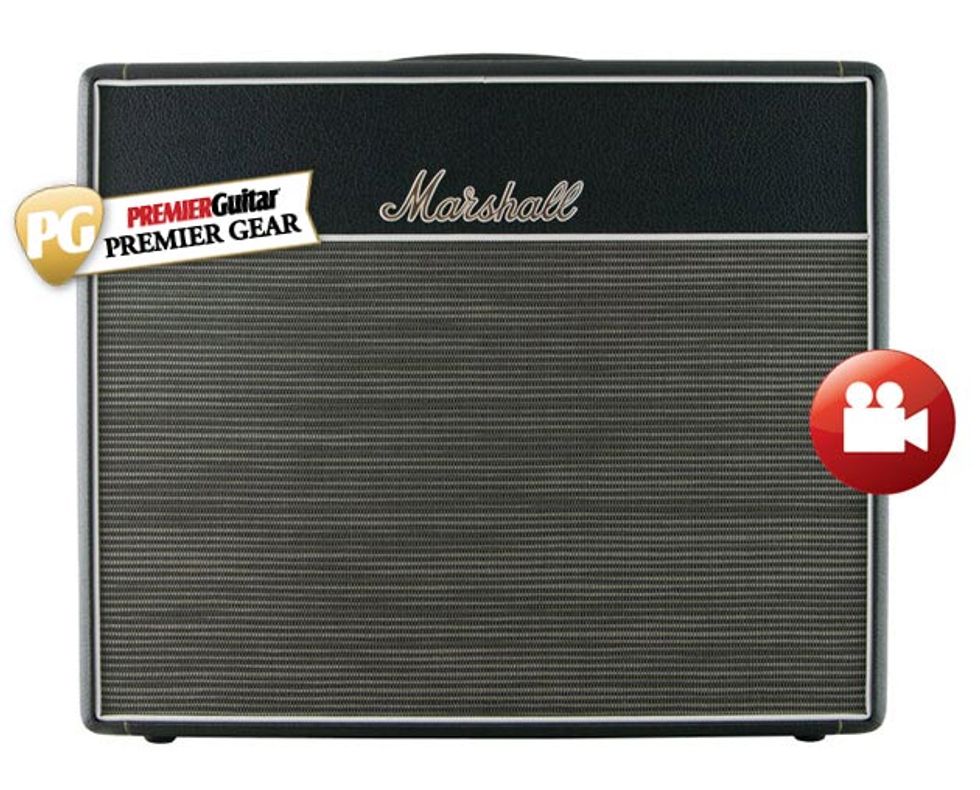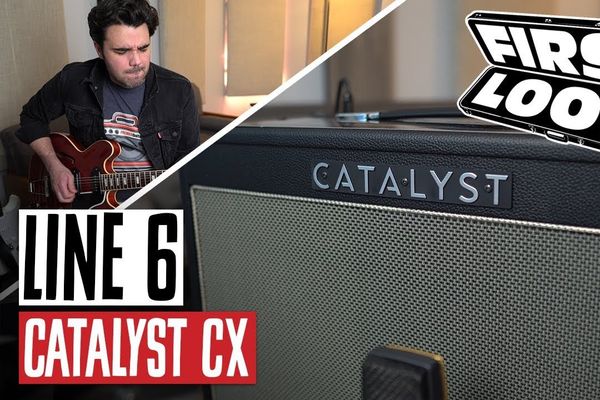A high-end, hand-wired version of Marshall’s little giant.

The 18-watt is the little Marshall that could. Originals were only manufactured for a few years in the mid-’60s and weren’t terribly popular at the time. Today they’re highly prized, and the circuit has inspired countless boutique spinoffs. Meanwhile, Marshall has added two versions of the 18-watt to their high-end Handwired Series: the 1973X, a 2x12 combo, and the 2x10 1958X reviewed here. I had a chance to get intimate with the 18-watt circuit when I built two 18-watt clone kits from scratch for a recent Premier Guitar story, so it was fascinating to get my hands on a “proper” model.
Biggie Smalls
The 18-watt has a reputation for delivering big Marshall sounds in a smaller, quieter package. It’s true—kinda sorta. Unlike larger Marshalls with their big tubes, 18-watts rely on a pair of EL-84s, just like a Vox AC-15. Meanwhile, the open-backed cabs provide less low-end thump than a Marshall 4x12, giving rise to occasional complaints that the 18-watt lacks sufficient lows. Maybe, but you can’t argue with the beefy classic rock tones generated by these little giants. Mind you, they’re still loud—maybe too loud for home use. But man, a gamut of glorious crunch tones lives along the range of each channel’s single volume knob. (There are no gain or master volume controls.) The EL-84s add a touch of Vox-like treble animation, but you’re not likely to mistake the sound of this amp for an AC-15, and certainly not for the comparably powered blackface Fender Deluxe. These amps sound and feel like Marshalls (even though Marshall’s design “borrowed” from the earlier Watkins Dominator circuit, just as Marshall’s earlier models cribbed from the Fender Bassman).
Like They Used To…
The 1958X proves that Marshall can make ’em like they used to. After my ham-fisted DIY builds, it was humbling to crack open the 1958X and behold its remarkable construction. Everything is handwired on turret board, with immaculately routed wires and flawless soldering (Pic 1). The circuit is faithful to the original, though tellingly, Marshall opts for modern passive components, including metal-film resistors and small-format capacitors. (Disclosure: I’m a mojo skeptic who doesn’t believe these modern parts have any perceptible bearing on the amp’s tone, and while I love the sound of the Mojotone 18-watt kit with its retro parts, the 1958X sounds at least as good.) The larger parts—including Dagnall transformers—seem hefty and reliable.
The hardware is equally impressive. The solid-wood cabinet is stout. The aluminum chassis is extra-thick, but not too heavy. (The amp weights in at just over 40 lbs.) The tubes face downward for easy servicing, not inward toward the speaker as on the clone kits. A rigid metal cage protects the power tubes—an improvement on the original design. The amp radiates the best sort of vintage build quality—it’s easy to imagine it rocking the room 50 years from now.
Ratings
Pros:
Excellent workmanship. Great classic rock distortion at reasonable volume. Glorious clean tones.
Cons:
Pricy. Not for players who need lots of lows.
Tones:
Ease of Use:
Build/Design:
Value:
Street:
$2,699
Marshall Amplification 1958X
marshallamps.com
Crunch Box
The 18-watt wins well-deserved praise for its distortion colors. They have great natural compression and a fine balance of mass and edge. They’re available at relatively low volumes, with useful variations throughout the volume control range. Not that you need to move the control—with a single volume and tone knob per channel, you can generally “set and forget” the knobs and regulate the crunch via touch and guitar knob adjustments. This exceedingly dynamic circuit is perfect for players who love walking the clean/crunch tightrope. But while the amp never sounds wimpy, it may not suit metal players, or anyone else who requires lots of low-end oomph.
Fans of this circuit tend to focus on its higher-gain sounds to the extent that its clean colors go unappreciated. Big mistake—they’re stunning. It’s not the high-headroom shimmer of, say, a larger Fender. But I love these warm, pretty tones, especially with just a hint of distortion and some thick, throbbing tremolo applied.
The clone kits I made all feature a single 12", but I think I prefer the sound of the dual 10s. Two speakers provide musically attractive phase cancellation that nudges tones closer to those of large Marshalls. I don’t perceive much low-end loss, and the 10s flatter the treble response, especially when playing cleanly. The 10" Celestion G10F-15s are designed to sound like worn-in vintage Greenbacks, and they provide an “old” flavor that suits the circuit.
The Verdict
This is a beautiful rendition of a beautiful design. The $2,700 street price is steep, if not unreasonable for a handmade amp of this quality. (The 2x12 model costs $100 more.) But there are many fine 18-watt clones and spinoffs in that price range, so you can afford to be selective and choose the exact configuration that suits your needs. (You might want more sophisticated tone controls, for example, or a head-only model.) But if you crave the original ’60s sound in a period-appropriate package, this finely crafted reproduction won’t disappoint.
Watch the Review Demo:


